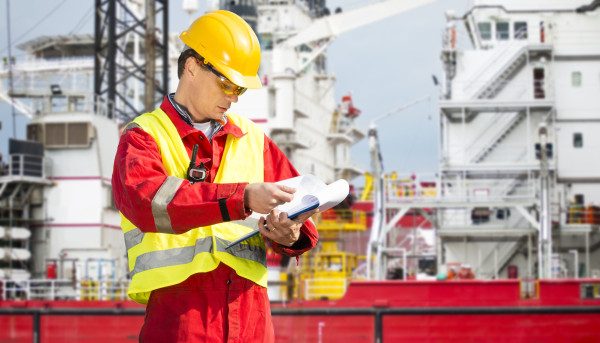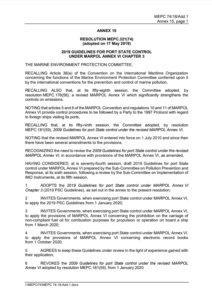The Hong Kong Marine Department issued a shipping note to advise parties concerned on the 2019 Guidelines for PSC under MARPOL Annex VI Chapter 3 adopted at IMO’s 74th Session of the Marine Environment Protection Committee (MEPC 74).
On 17 May 2019, MEPC 74 adopted resolution MEPC.321(74) to introduce the 2019 Guidelines for port state control (PSC) under MARPOL Annex VI chapter 3.
The 2019 PSC Guidelines are intended to provide basic guidance on the conduct of PSC inspections for compliance with MARPOL Annex VI and afford consistency in the conduct of these inspections, the recognition of deficiencies and the application of control procedures.
The 2019 PSC Guidelines are applicable from 1 January 2020 when exercising port State control under MARPOL Annex VI.
It is noted that the 2019 PSC Guidelines revoke the 2009 Guidelines for PSC under the revised MARPOL Annex VI adopted by resolution MEPC.181(59) from 1 January 2020.
The PSCO should ascertain the date of ship construction and the date of installation of equipment on board which are subject to the provisions of the Annex, in order to confirm which regulations of the Annex are applicable.
On boarding and introduction to the master or responsible ship’s officer, the port State control officer (PSCO) should examine the following documents, where applicable:
1. The International Air Pollution Prevention Certificate (IAPP Certificate) (regulation VI/6), including its Supplement;
2. the Engine International Air Pollution Prevention Certificate (EIAPP Certificate) (paragraph 2.2 of the NOX Technical Code) including its Supplement, for each applicable marine diesel engine;
3. the Technical File (paragraph 2.3.4 of the NOX Technical Code) for each applicable marine diesel engine;
4. depending on the method used for demonstrating NOX compliance for each applicable marine diesel engine:
- the Record Book of Engine Parameters for each marine diesel engine (paragraph 6.2.2.7 of the NOX Technical Code) demonstrating compliance with regulation VI/13 by means of the marine diesel engine parameter check method; or
- documentation relating to the simplified measurement method; or
- documentation related to the direct measurement and monitoring method;
5. for a ship to which regulation VI/13.5.1 applies for a particular NOX Tier III emission control area and that has one or more installed marine diesel engines certified to both Tier II and Tier III or which has one or more marine diesel engines certified to Tier II only1 that there are the required log book and the recordings for the tier and on/off status of those marine diesel engines while the ship is within an applicable NOX Tier III emission control area;
6. the Approved Method File (regulation VI/13.7);
7. the written procedures covering fuel oil change over operations (in a working language or languages understood by the crew) where separate fuel oils are used in order to achieve compliance (regulation VI/14.6);
8. the approved documentation relating to exceptions and/or exemptions granted under regulation VI/3;
9. the approved documentation (SECC where issued, ETM, OMM, SECP) and relating to any installed Exhaust Gas Cleaning System (EGCS) or equivalent means, to reduce SOX emissions (regulation VI/4);
10. that the required EGCS monitoring records have been retained and show compliance. Additionally, that the EGCS Record Book including nitrate discharge data and performance records,2 or approved alternative, has been duly maintained;
11. the bunker delivery notes (BDNs) and representative samples or records thereof (regulation VI/18);
12. the copy of the type approval certificate of applicable shipboard incinerator (resolutions MEPC.76(40) or MEPC.244(66));
13. the Ozone Depleting Substances Record Book (regulation VI/12.6);
14. the VOC Management Plan (regulation VI/15.6);
15. any notification to the ship’s flag Administration issued by the master or officer in charge of the bunker operation together with any available commercial documentation relevant to non-compliant bunker delivery, regulation VI/18.2; and
16. if the ship has not been able to obtain compliant fuel oil, the notification to the shipʹs flag Administration and the competent authority of the relevant port of destination.
Find out more details in the official IMO document:


































































